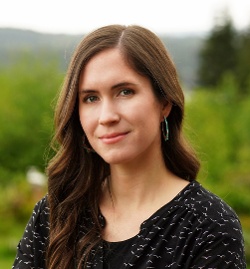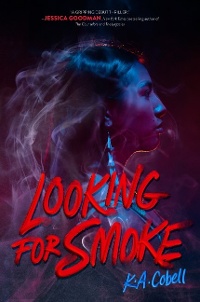Publishers' Preview: Spring 2024: Five Questions for K. A. Cobell
In the debut YA novel Looking for Smoke, four Blackfeet teens confront the certainty that there is a killer in their midst.

This interview originally appeared in the March/April 2024 Horn Book Magazine as part of the Publishers’ Previews: Spring 2024, an advertising supplement that allows participating publishers a chance to each highlight a book from its current list. They choose the books; we ask the questions.
Sponsored by

In the debut YA novel Looking for Smoke, four Blackfeet teens confront the certainty that there is a killer in their midst.
 1. Do you have a favorite place on the Blackfeet Reservation?
1. Do you have a favorite place on the Blackfeet Reservation?
My family has a plot of land on Lower Saint Mary Lake. It’s tucked in the trees, and the lake bottom and shore are mostly flat rainbow rocks — perfect for skipping. The water is almost unbearably cold because of the glacial runoff, but it’s so crystal clear you can see straight to the bottom. It’s gorgeous!
2. What was your own high-school friend group like?
I was lucky enough to have a few different friend groups, each as hilarious and supportive as the last. I had plenty of people I could count on for anything.
3. When did you realize you wanted multiple narrators?
I knew from the beginning. I wanted to show different family dynamics and how they affect the characters, and the unique effects the tragedy has on each of them. I also wanted to bring relatability to each of their secrets — key to a good thriller.
 4. What books have taught you the most about writing?
4. What books have taught you the most about writing?
Courtney Summers’s Sadie will always be an inspiration for my own writing. Its creative structure, raw emotion, and compelling, desperate protagonist create such a propulsive read, all while powerfully dealing with grim subject matter.
5. How do you balance the demands of writing an entertaining mystery with honoring the real-life tragedy of Missing and Murdered Indigenous Women, Girls, and Two-Spirit People that inspired it?
I was nervous to write Looking for Smoke for this reason. I didn’t want these fictional cases to detract from the real ones. I used a podcast as a device to insert a degree of separation between the fictional cases and the real-life statistics I tried to shine a light on within the story, but in the end, I think most of it came down to my characters. I did my best to make these young characters feel whole and raw. Their situations are made up, but their emotions in the face of loss and trauma are accurate. If readers can empathize with them, I think they’ll better understand the impact the issue of MMIW has on real families dealing with its heartache.
Sponsored by

Photo: S. Webb.
RELATED
ALREADY A SUBSCRIBER? LOG IN
We are currently offering this content for free. Sign up now to activate your personal profile, where you can save articles for future viewing.







Add Comment :-
Comment Policy:
Comment should not be empty !!!